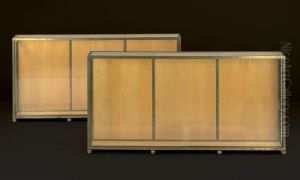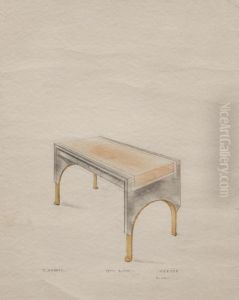Eugene Printz Paintings
Eugène Printz was a distinguished French designer and decorator, whose work profoundly contributed to the decorative arts field in the early 20th century. Born in 1889 in Paris, France, Printz grew up in a time of artistic flourishing and innovation, which undoubtedly influenced his later creations. He was the son of a cabinetmaker, which gave him an early introduction to the world of furniture design and craftsmanship. This background laid the foundation for his future endeavors in the realms of furniture design and interior decoration.
Printz began his career working in his father's workshop, where he honed his skills in woodworking and developed an appreciation for quality craftsmanship. His early experiences in the workshop were crucial in shaping his design philosophy, which emphasized the importance of materiality, craftsmanship, and functionality in furniture design. In the 1920s, Printz started to make a name for himself in Parisian design circles, where his innovative use of materials such as palmwood, metal, and lacquer caught the attention of contemporaries and patrons alike.
During the 1925 Exposition Internationale des Arts Décoratifs et Industriels Modernes in Paris, which gave Art Deco its name, Printz's work gained significant recognition. His designs from this period showcased his mastery of modernist principles, combined with his unique flair for combining traditional craftsmanship with contemporary aesthetics. Printz's furniture pieces were known for their elegant lines, refined forms, and the luxurious use of materials, which made them highly sought after by the elite of Paris and beyond.
Throughout his career, Printz collaborated with several prominent artists and architects, including Jean Dunand, with whom he shared a close professional relationship. This collaboration enriched Printz's work with additional layers of artistic expression and innovation. He was not only a furniture designer but also took on interior design projects, creating cohesive and sophisticated environments that reflected his modernist sensibilities.
Eugène Printz passed away in 1948, leaving behind a legacy that has continued to influence the field of decorative arts. His work is celebrated for its innovative design, exquisite craftsmanship, and the seamless integration of form and function. Printz's contributions to the Art Deco movement and his commitment to pushing the boundaries of furniture design have cemented his place as one of the foremost designers of his time.


